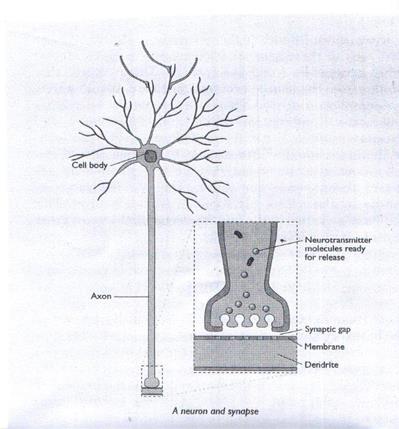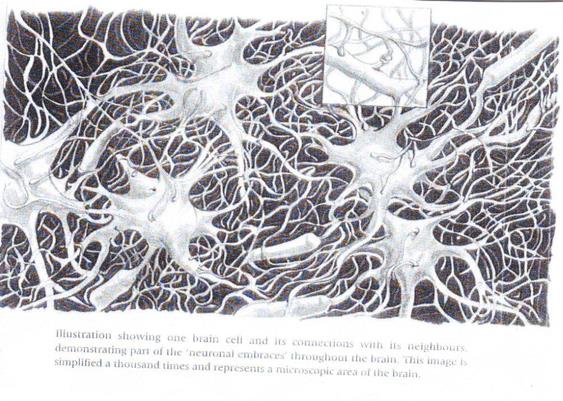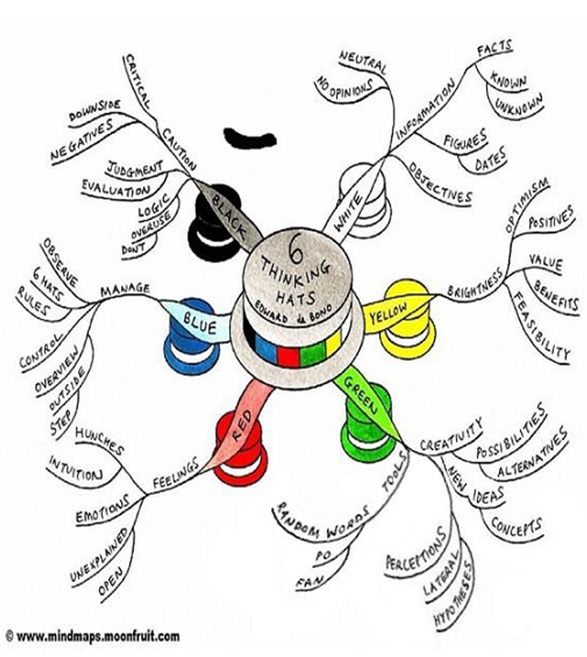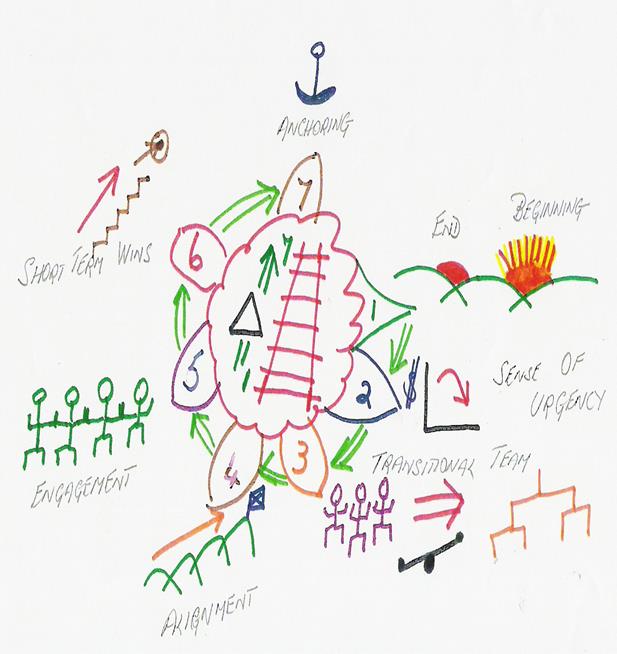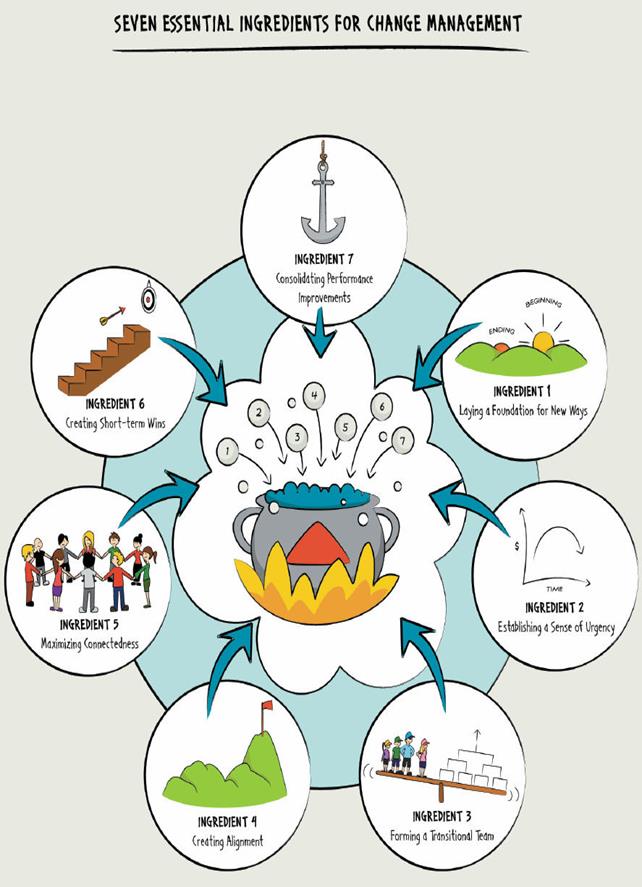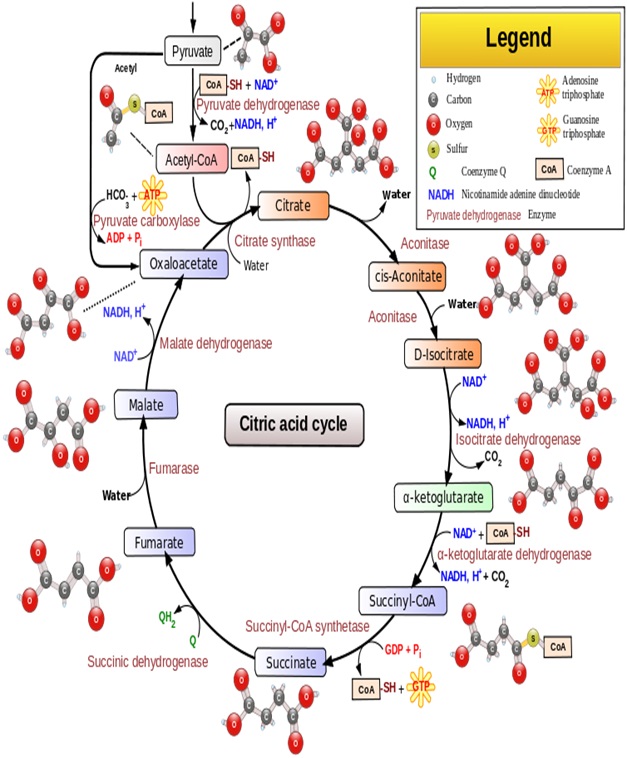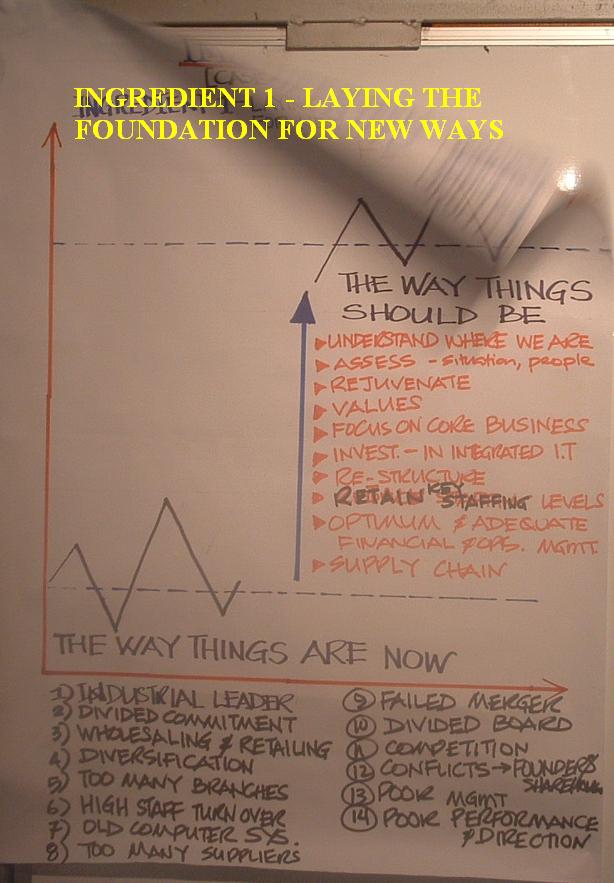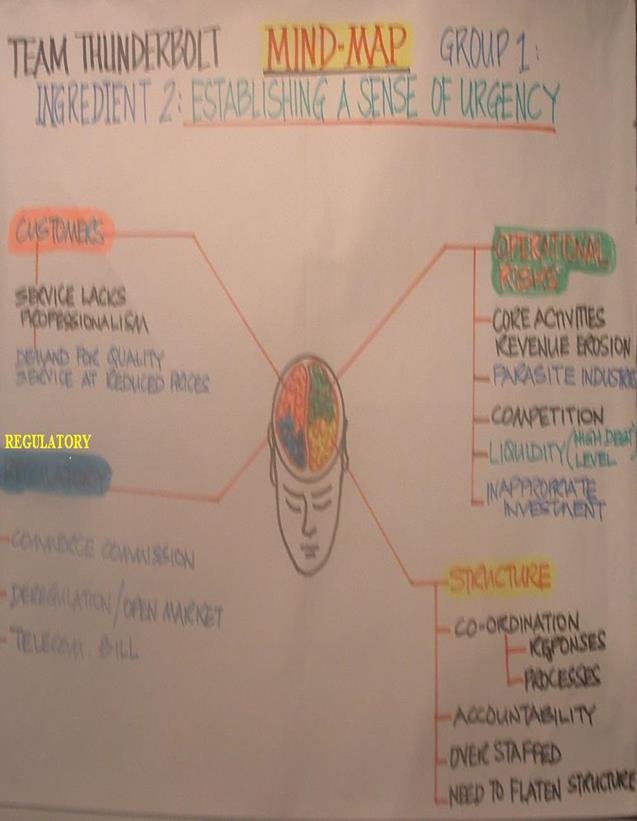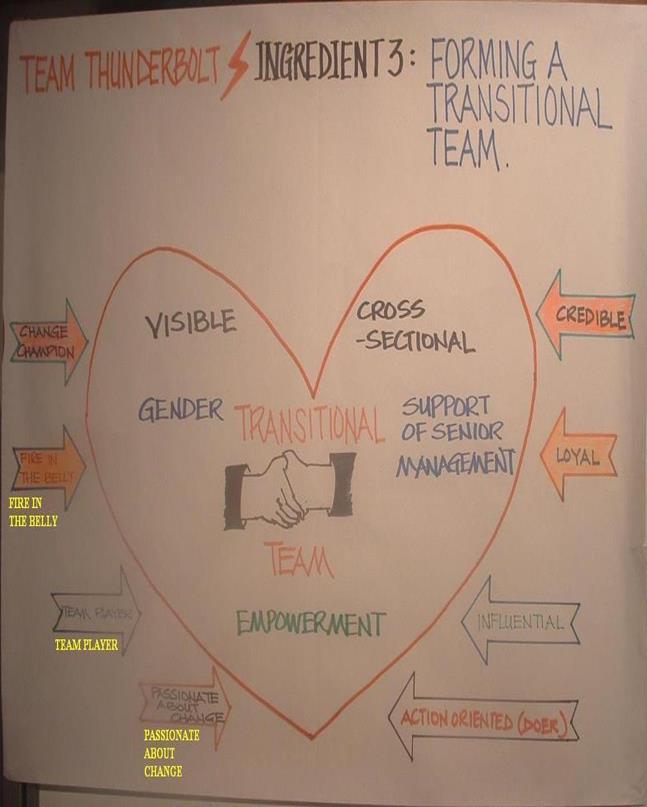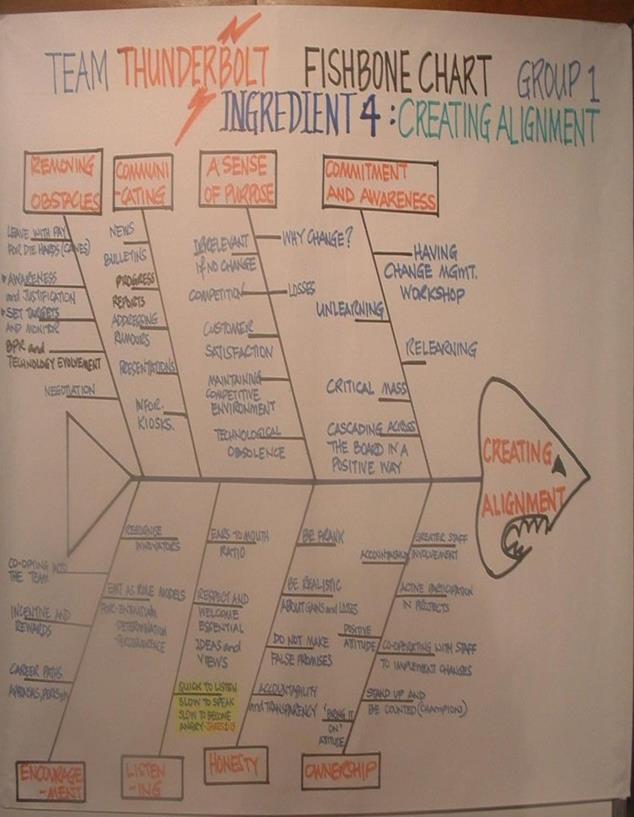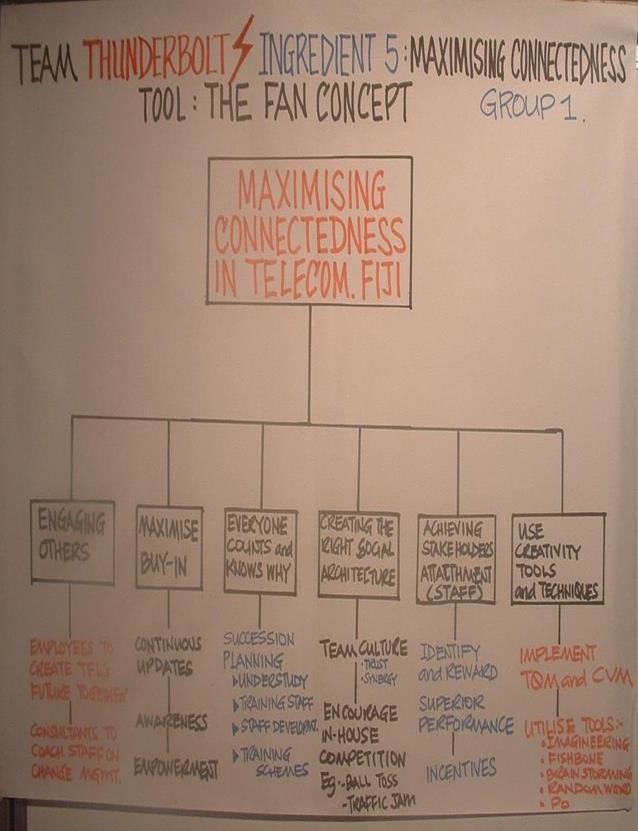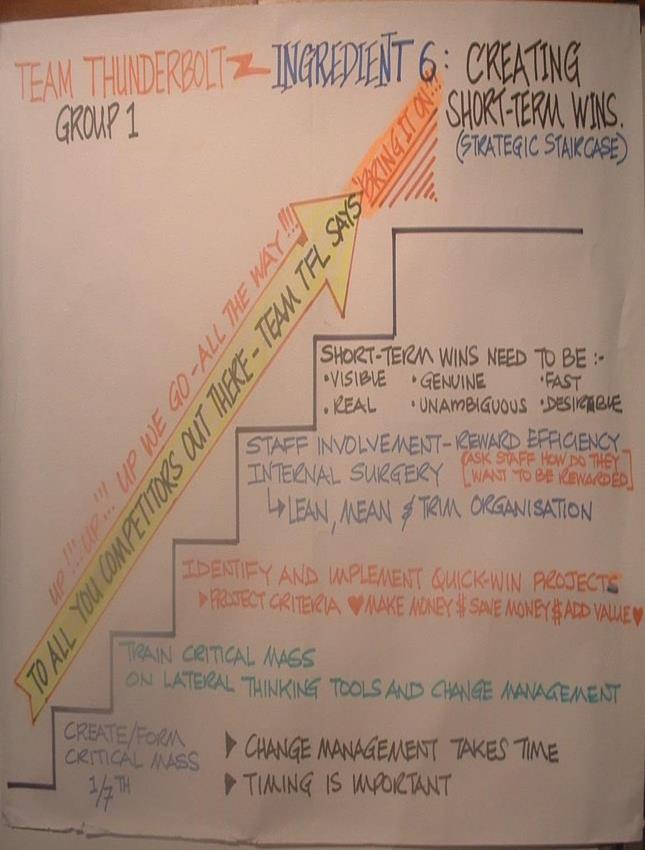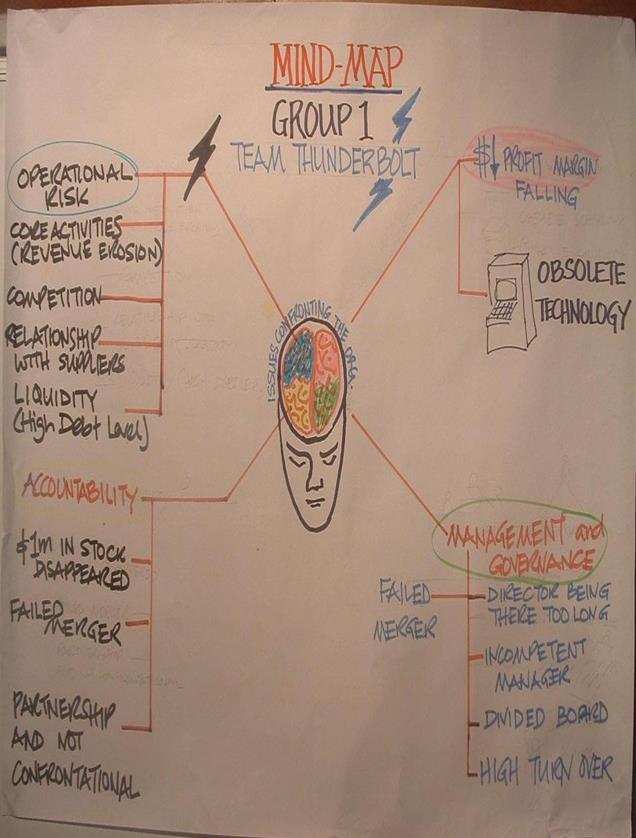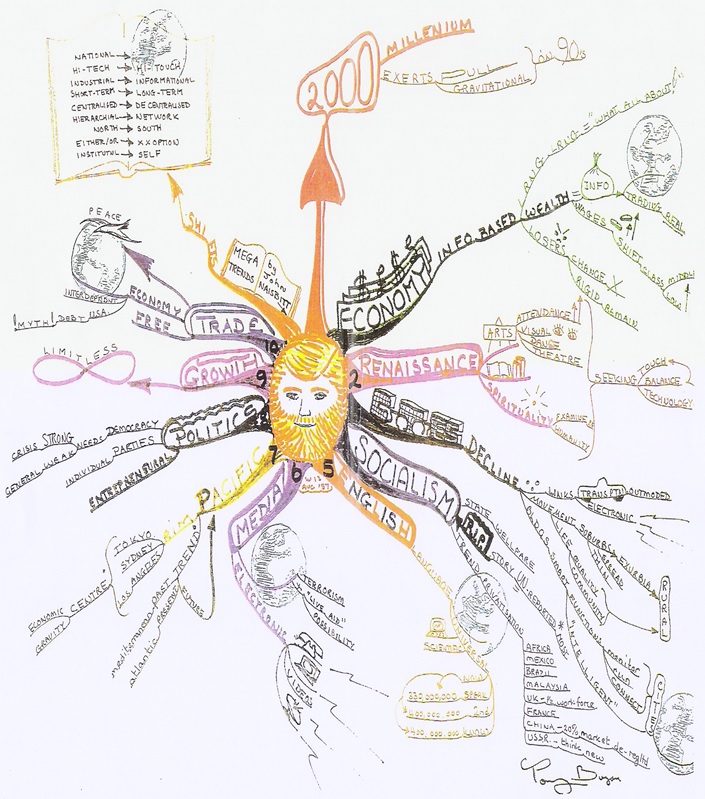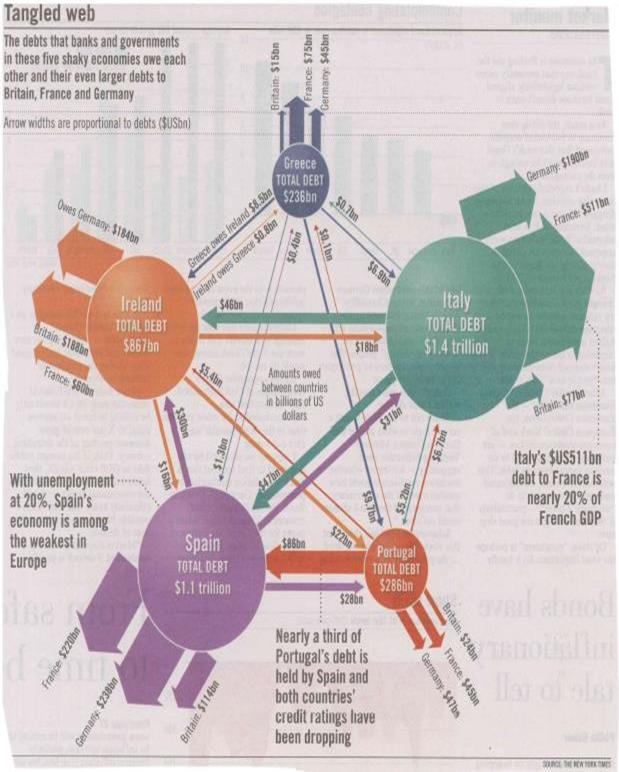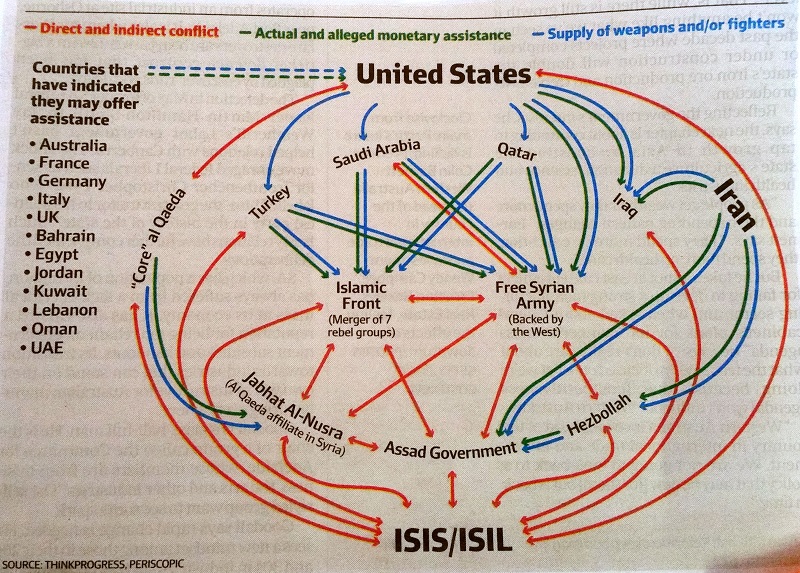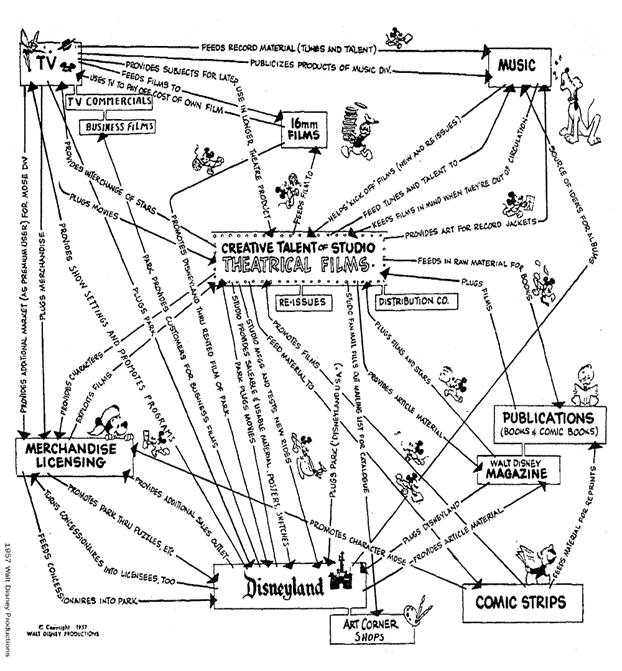Technique 9.2 Mind Mapping or Radiant Thinking
What it is
"...a mind map is just a diagrammatic way to present an idea or project with a central theme radiating linked thoughts and actions..."
Peter Moon, 2007
Mind mapping represents the way the brain works, especially the cerebral cortex; it reflects the radiant nature of the brain at work and was used by great thinkers like daVinci and Einstein
Mind mapping is the visual language of our thoughts, ie a visual way of thinking. It is a method of creating a drawing to represent words, ideas, thoughts, tasks, activities, etc arranged around a central theme that is expressed by a key word, diagram, symbol, etc; it involves creating associations
It is of interest to note that the Indigenous people of Australia have used a radiant thinking map approach for thousands of years; it was given the genetic name of "message stick". More recently, people like Tony Buzon, have popularized the concept under the term "mind mapping" " (NB "mind map" and "radiant thinking" are registered trade marks of the Buzan Organisation, 1990 and 1994 respectively).
· · Mind mapping immediately doubles thinking power and replaces the traditional note-taking system. It is particularly useful in creative thinking, speech preparation, note-taking, strategic planning, decision-making, problem-solving, memory and review devices and as a communication technique and for training at all levels. For example, it is claimed that we forget 80 percent of what we learned in the first 12 hours. Mind mapping is a way of training the muscles in the brain to stimulate memory plus creativity, general thinking, problem solving, etc
Remember
"...a picture is worth 1000 words..."
as quoted by Alexander Osterwalder et al, 2010
Mind maps are an example of a visual thinking tool (pictures, sketches, diagrams, post-it notes, charts, graphs, etc) that can
- help people simplify, clarify and develop a joint understanding of problems/challenge/issues/opportunities, etc.
"...a powerful visual story reinforcing your pitch can increase your chances of winning understanding and backing for your idea. Using images rather than just words to tell the story make your case even stronger, because people can identify immediately with images. Good imagery readily communicates your organisation's current status, what needs doing, how it can be done, and what the future might look like......strong visuals substantially increase chances of success..."
Alexander Osterwalder et al, 2010
- obtains a better understanding of the big picture to avoid getting lost in the details around processes, structures and systems
- helps to meaningfully discuss, explore and find issues/challenges/opportunities, etc by providing the right amount of formation so that the viewer can grasp the idea but not too much detail to distract him/her
- encourages information sharing so that
i) implicit assumptions become explicit information as a way to improve the dialogue, ie can provide a reference point
(NB short-term memory can only hold a limited number of ideas).
ii) it provides a language that helps people understand each other, ie can focus discussion, and support idea exchange, shared understanding and increase team cohesiveness.
iii) many people have a deep understanding of some elements but lack a solid grasp of the whole
iv) many more people can understand and have constructive inputs so that many develop ownership of the challenges/problems, etc than solutions.
- identify relationships showing their interdependence especially when there are many elements involved; many people have a deep understanding of some elements that lack a solid grasp of the whole. Also, everybody involved gains an understanding of the individual components and their shared relationships
- fill in the missing pieces, ie dialogue involving ideas can trigger new ones, etc. Also, can look at what happens if you remove things and/or insert new ones, eg what happens if you remove a certain customer segment, etc
People react more strongly to images than words, as pictures deliver messages instantly. Simple drawings can express ideas that otherwise require many words. Some examples: a stick figure with a smiling face conveys emotions; big bag of money and a small bag of money convey proportions, etc
Artistic talent is not important. Some people get embarrassed about their unsophisticated or childish sketches. Even the simplest stick figure is more easily interpreted than abstract concepts expressed in text.
There is a misconception that one should not draw something until one understands it. On the other hand, sketches (rudimentary or amateurish) help people to describe, discuss and understand things, especially those of a complex nature.
In developing a mind map, one way is to use post-it notes. They functioned like idea containers that can be added, removed and easily re-positioned.
When using post-it notes there are some guidelines
- use thick marking pens to write - they are easier to read and limit the amount of information on a single post-it note
- write only one element per post-it note
- write only a few words per note to capture the essential point
- use drawing/images, etc , rather than word
(NB the discussion around each post-it note helps people get a better understanding)
Using post-it notes is an appealing way to develop the story image by image or piece by piece. This reduces the chance of being overwhelmed by the full description
· · The traditional approach to thinking is best expressed by note-taking, ie
- linear
- mono-colour
- limited symbols like letters, words and numbers.
The disadvantages of note-taking are
- obscures key words
- is not easy to remember
- wastes time
- fails to stimulate the mind's creativity
- works against the processing style of the brain
The neurons of the brain represent a mind map ie
A mind map is a learning technique that incorporates the traditional mental techniques of words, numbers, lines, lists and sequences, with an additional set of mental techniques that are especially powerful for improving memory and creative thinking:
- image
- colour
- focus
- dimension
- space
- linkages
- connections
- association or liking
Mind maps are often colourful, dramatic, and highly visual in format. Artistic skill is not important - basic doodling, symbol-making and outlining skills are all that is required.
Mind maps give a clear picture of the overall structure of information. Furthermore, they allow the user to see connections
One of the key strengths of mind maps also highlights a weakness. Mind maps encourage distillation of thought into single words. The power in this is that it promotes absolute clarity and discipline, removing words extraneous to meaning while allowing for full extensions of associations and links, which speed and expand the creative process. Mind maps are great for an overview and rapid extrapolation of thoughts and concepts, but can be lacking in detailed explanations for later use or for people not present when they were created
Users of mind maps include
- Boeing - it mind-mapped an engineering manual, enabling a team of 25 engineers to learn in a few weeks what had previously taken a few years, and saved over $US11 million
- Digital Equipment Corp. and Nabisco - they formed group study programs enabling staff to absorb between 4 to 6 books' worth of information in one day
- Benjamin Zander, (conductor, Boston Philharmonic) ‐ mind-mapped Beethoven's "Symphony No. 9" to develop a startlingly new and acclaimed approach to the work
- Australian Human Rights and Equal Opportunity Commission - used mind-mapping to visualise and document hundreds of issues relevant to human rights in Australia
- Con Edison (a big gas and electricity supplier) used mind-mapping to work out ways to restore power to the city residents after the 9/11 terrorist strikes in New York
- Melbourne water utility firm used mind-mapping to develop an emergency response system to avoid a catastrophe, such as the Giardia water-contamination scare in the late 1990s
- Albert Einstein (one of the greatest minds of the 20th century) used mind mapping techniques. It was called "visual thought experiments" (Gedankenexperiment). Luckily in his late teens, Albert Einstein went to a school where students were encouraged to visualise images by using observations and then proceeding to intuition, conceptual thinking and visual imagery. This was different from the more traditional schooling techniques, such as rote drills, memorisation and forced-fed facts. This visual understanding of concepts, called visual thought experiments (Gedankenexperiment), was important in his work. He continually used this variation of mind maps, ie putting thinking into pictures to help understand complicated issues. This became a hallmark of his brilliant career. Some examples are
- watching lightning strike from a moving train
- experienced gravity while inside a falling elevator
- riding alongside a light beam, ie
"...If a person could run after light waves with the same speed as light, you would have a wave arrangement that could be completely independent of time..."
Albert Einstein as quoted by Walter Isaacson 2007
- 2-dimensional blind beetles crawling on curved branches
- a variety of contraptions designed to pinpoint the location and velocity of speeding electrons
Guidelines for Mind Mapping
Use emphasis
Use association
Be clear
Develop a personal style
Consider layout
Use Emphasis
Always use a central image (focuses eye and brain so that the image triggers association and memory)
Use images throughout your Mind Map (but artistic talent is not important)
Use 3 or more colours per central image (colour stimulates memory and creativity)
Use dimensions (3D) in images and around words (stands out and helps memory and communications)
Use variations in size of printing, line and image (this indicates relative importance)
Use organised spacing (clarity)
Use appropriate spacing (around each item to help with order and structure)
Use Association (important for creativity and memory)
Use arrows when you want to make connections within and across the branch pattern
Use colours
Use codes (helps with connections and saves time)
Be Clear
Use only one word per line
Print all words
Print key words on lines
Make major branches connect to central image
Connect lines to other lines
Make the central line thicker
Make your boundaries embrace your branch outline
Make and keep images as clear as possible
Keep your paper placed horizontally in front of you
Keep your printing as upright as possible
Develop a Personal Style
Develop clarity of layout
Establish a hierarchy of ideas
Use numerical ordering
Additional Hints for Mind Maps
Break mental blocks
- add blank lines
- ask questions
- add images
- look for associations
Reinforce
- review your Mind Maps
- do quick Mind Map checks
Application of Mind Maps
(see following pages for examples)
Four Simple Applications
i) Guidelines for Mind Mapping
ii) Computer Applications of Mind Mapping
iv) The Reasons for not Giving a Dog to a 5-year old
v) Six Hats Thinking
vi) Seven Ingredients to a Successful Organisational Transition
- First Draft
- Final
vii) Example of 7 ingredients (TFL, Fiji)
More Complicated Application
a. Mega Trends
b. European Financial Situation re Greece Crisis (2010)
c. Walt Disney (1957)
(sources: Tony Blair, 1998; Tony Buzan et al, 1999; Tony Buzan, 1995; Annabel Hepworth, 2004b; Fiona Walsh et al, 2002; Fiona Smith, 2007b; Peter Moon, 2007; Ion Idriess, 1947; Walter Disney, 2010; AFR, 2010)
Guidelines for Mind Mapping
(source: Buzan Centre - Australia @ Mindwerx International, 2004)
More on Developing Mind Maps
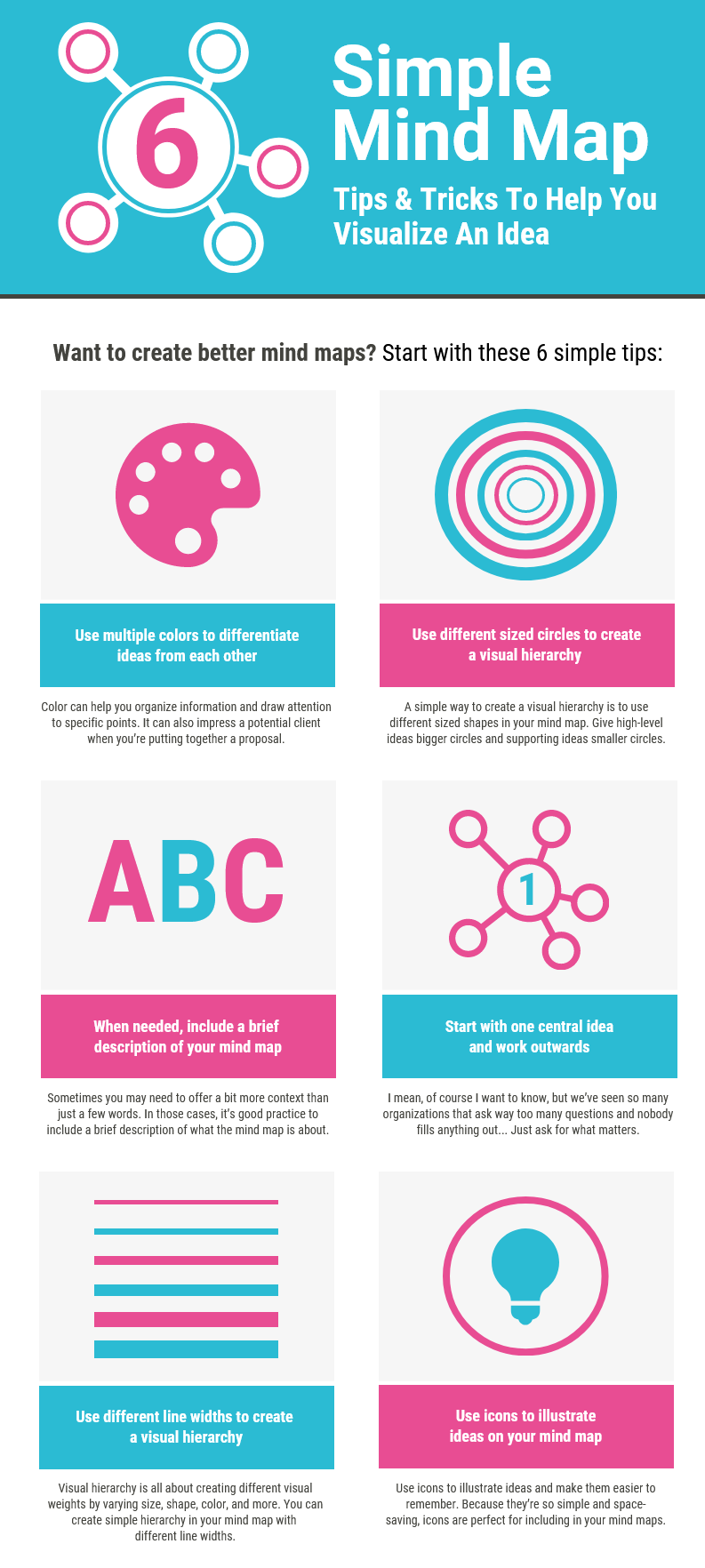
(source: https://infograph.venngage.com)
An example of a simple mind map
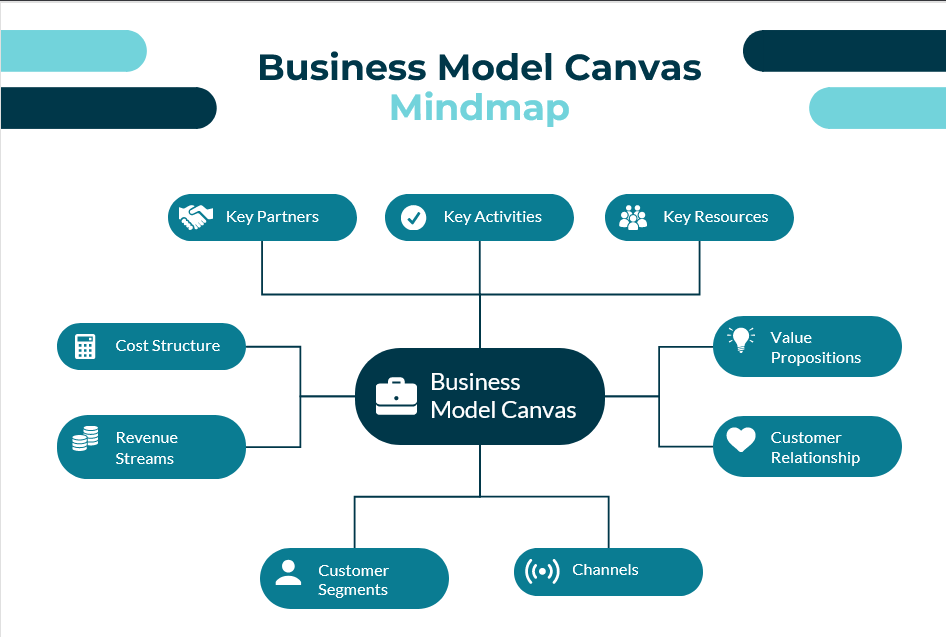
(source: https://infograph.venngage.com)
- ' A Cloud Guru' (ACG)
ACG is a successful online training company that was created by 2 brothers Ryan and Sam Kroonenburg; it is worth over $A 5 billion (late 2021).
"...I had to learn how to learn, because IT was just information overload, so I read a whole bunch of Tony Buzan. The mind mapping author inspired a structure that will be familiar to nearly 3 million people who have now taken A Cloud Guru course. For each new concept we did an intro, deep dive summary, intro, deep dive summary, and then you summarise the summary. We just kept driving the knowledge into them, so they retained it......the popular 'sandbox' element of ACG courses, where students apply their fresh knowledge to solve simulated cloud architecture problems......also owes something to Buzan's memory-enhancing techniques..."
Ryan Kroonenburg as quoted by Joe Buglewitz et al, 2021
- COVID -19
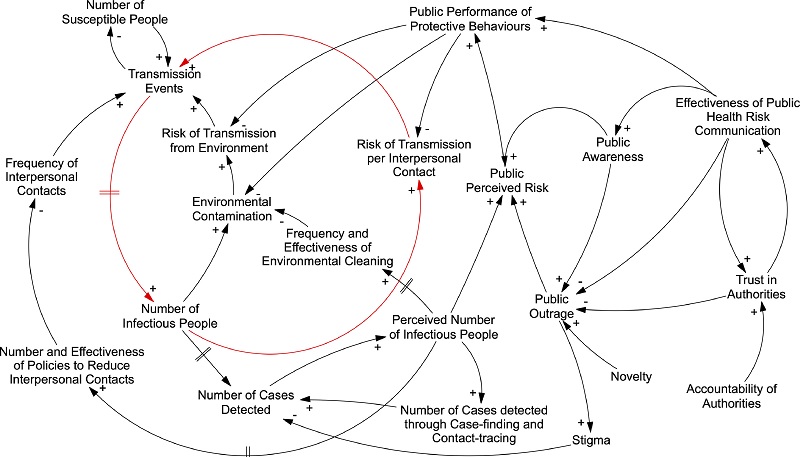
(source: https://www.thelancet.com/journals/eclinm/article/PIIS2589-5370(20)30069-9/fulltext)
Computer Applications of Mind Mapping
(www.mindsystems.com.au or see mindmanager)
Reasons for not Giving a Dog to a 5-year old
This mind map vividly illustrated the compelling reasons presented to convince the child: The dog will cost money ($) and this factor is enlarged on
(i) feeding the dog (PAL & bone);
(ii) need to build a fence around the garden (fence) as if the dog gets out the local Council will fine us (fine);
(iii) need to build a dog kennel (kennel);
(iv) the dog will need to regularly visit the vet (needle);
(v) an attack by the dog on someone could result in a court appearance (writ).
Already have a cat, and usually dogs and cats are not friends (cat);
Regularly go on holidays and most destinations do not allow pets (car and sun);
Dogs can make a mess (ruining gardens, burying bones and manure);
After the novelty wears off, who will be taking the dog for a walk? (lead);
His mother (depicted by a most inadequate stick figure!!) does not like dogs.
Of course, a sample set of notes like those above would have had a lot less impact on a 5 year old! Thanks to the mind mapping, he agreed to a compromise: once the cat dies, we will consider getting a dog. (So the child started investigating ways to kill the cat!!!!! Just joking!! Thankfully, ten years later, the cat continues to thrive!)
Farm Diversity Scheme
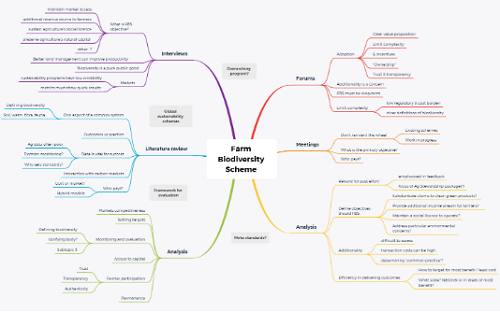
(source: Australian Farm Institute, 2020)
Six Hats Thinking
Seven Ingredients for Selecting a Framework for Successful Organisational Change ‐ first draft
Bio-Chemical Life-cycle
(source: TFL, 2005)
Mega-trends
(summary of 240 page book)
(source: Tony Buzon, 1995)
European Financial Situation re Greece Crisis (2010)
(source: Australian Financial Review ‐ AFR, 2010)
The tangled web in the fight for Syria & Iraq (2015)
(source: Tony Walker, 2014a)
Mind map to describe findings at Conference entitled "ChangeFest", Logan, Queensland, Australia (2018)

Walt Disney's Mind map (1957)
The above mindmap by Walt Disney show how he successful predicted the future direction of his empire into many activities.
Another example of Walt Disney using mind maps for his theme parks

Two mind maps used to show the complexity of visa holders (temporary and permanent) in Australia (October 2022).
Temporary visa holders by class and stream:
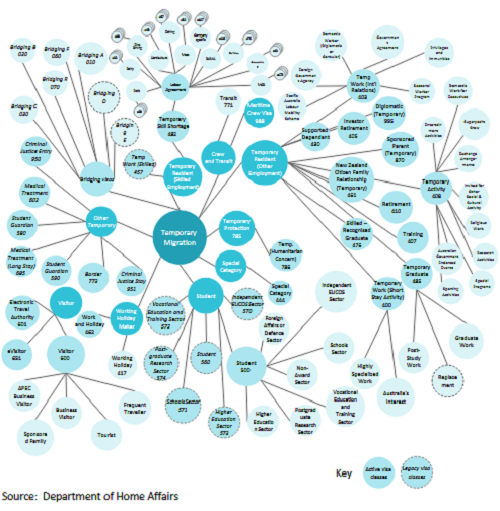
Australian Government (2023)
Another mind map shows that permanent visas holders (October 2022) in Australia by visa subclass and stream.
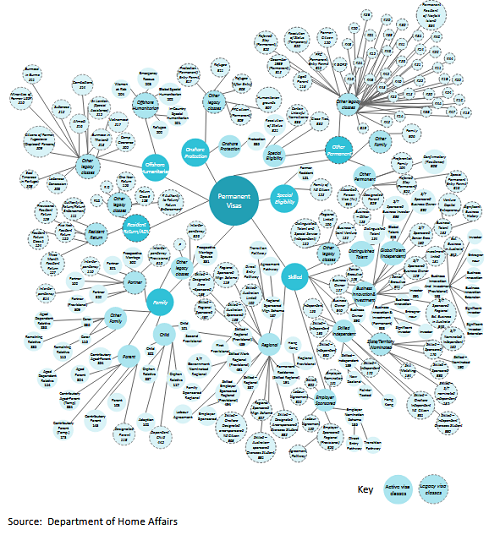
Australian Government (2023)
These 2 mind maps were part of a review demonstrating the need to reduce the number of different types of temporary and permanent visas. For example, in the temporary visa component there are 400+ separates streams; each with their own requirements.
Monash University's 'operational modi'
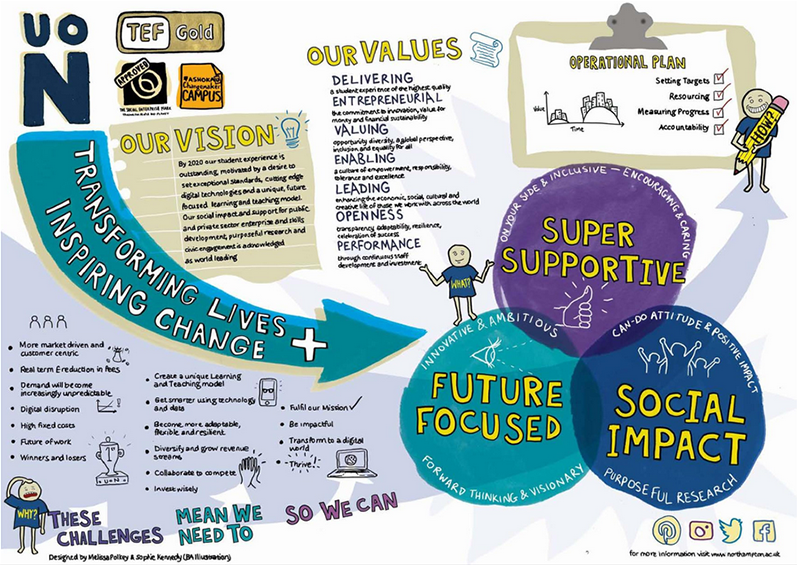
(source: Monash University, 2024)
Another mind map, ie POLC in a changing environment (Monash University)
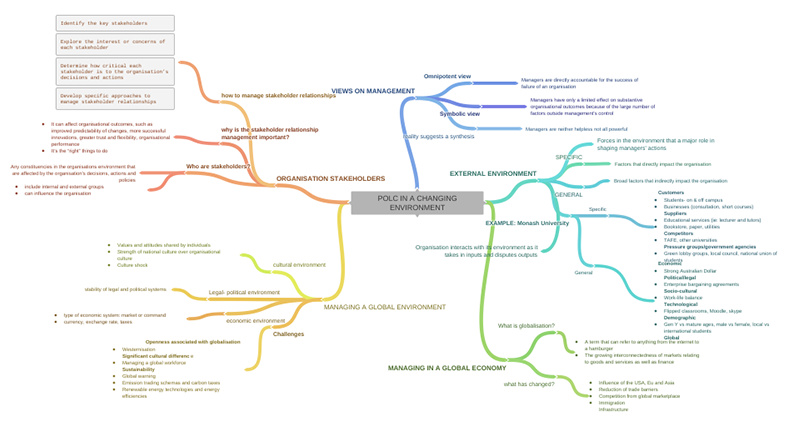
(source: Monash University, 2024)
Mind Map (Healthy Lifestyle)
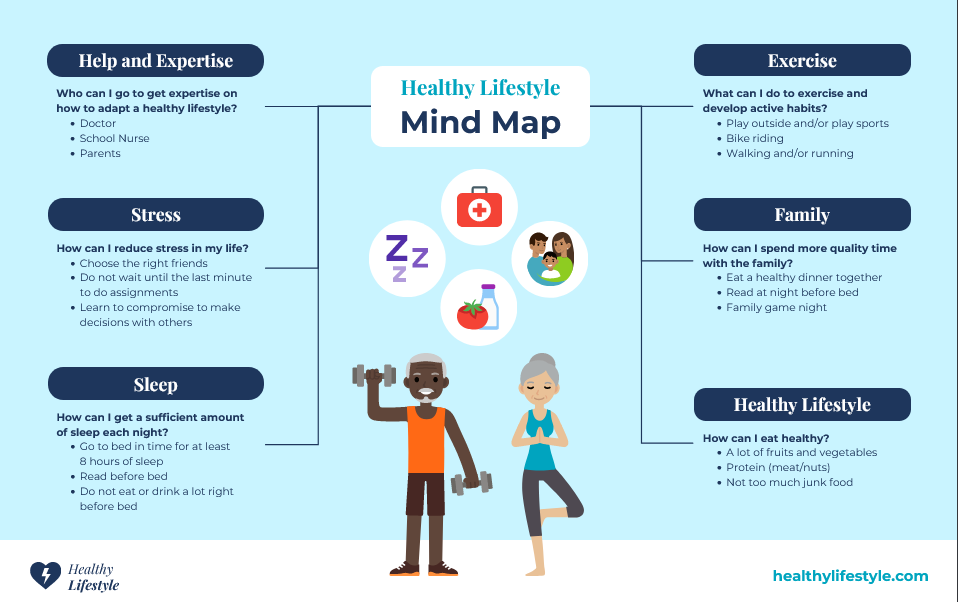
(source: https://infograph.venngage.com)
More on Mind Mapping or Radiant Thinking

(source: https://infograph.venngage.com)

